We were recently given the news that former dictator Blaise Compaoré, who ruled Burkina Faso from 1987 to 2014, will face the justice of his country for his role in the murder of Thomas Sankara and various other crimes committed during his tenure.
Compaoré, perhaps the man closest to Sankara and a lifelong friend of his, on October 15, 1987, rose up in arms with other soldiers who rebelled in a coup that resulted in the violent death of the revolutionary leader.

But what was behind it? To answer this we must inquire into the background of said coup. So let’s go back to 1981: the year in which Libyan leader Muammar al-Gaddafi “discovered” a young admirer named Thomas Sankara through notes from his country’s embassy in Ouagadougou.
This will be Colonel Gaddafi’s first contact with Captain Sankara, who at that time, two years before taking the reins of his country, was only 31 years old. That same year, Sankara was appointed Secretary of State for Information under the colonels.
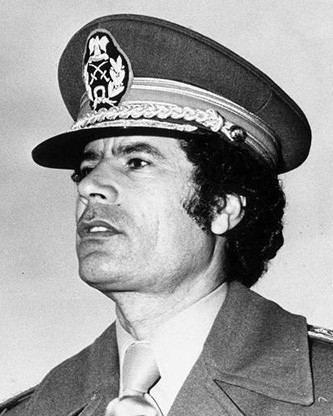
The young captain had already led since 1979 a secret faction of the army, with leftist, revolutionary, progressive, patriotic, pan-Africanist and anti-imperialist tendencies. In this group of officers was, among others, his best friend: Blaise Compaoré.
The Libyan president is very interested in this group of young officers, especially its promising leader. From now on, the officers will be in contact with the Mukhabarat el-Jamahiriya, Libya’s intelligence services.
This is nothing new because Gaddafi, seeking to expand his influence within the framework of the anti-imperialist struggle, finances armed groups and revolutionary organizations throughout the African continent. It is not surprising then that Libya sponsored these young people.
On November 7, 1982, a coup d’etat took place in Alto Volta that elevated Jean-Baptiste Ouédraogo to the presidency of the country, overthrowing the military regime that governed it at that time.
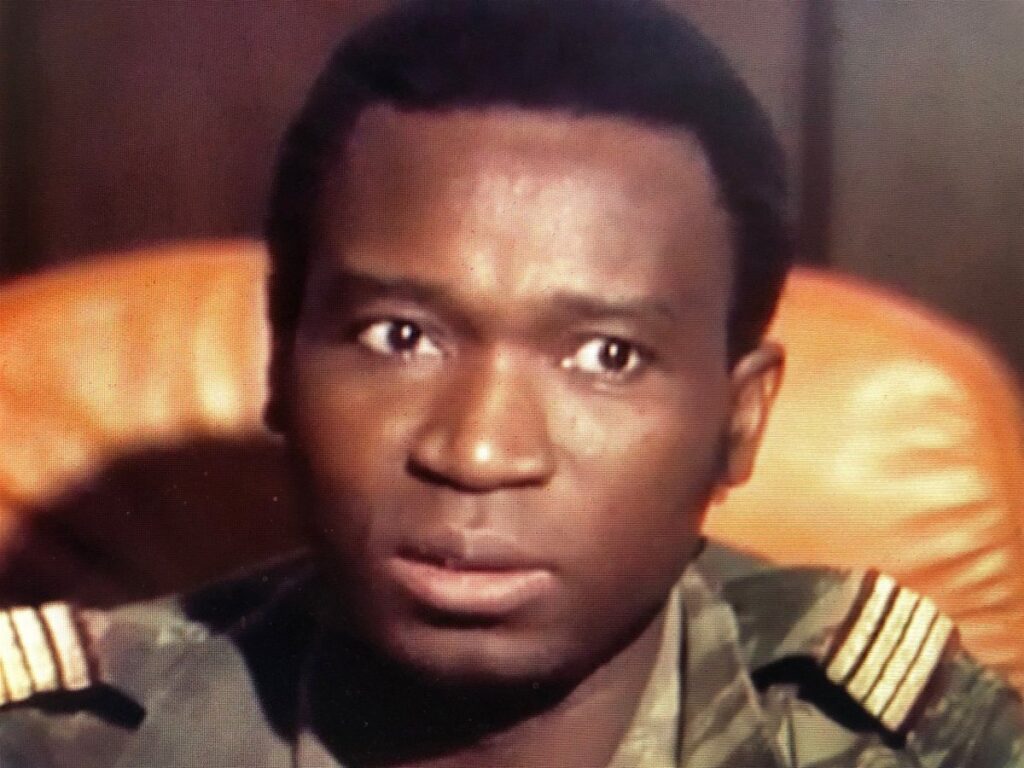
Sankara and Compaoré will play a prominent role in these incidents.Ouédraogo, a military man with progressive tendencies, establishes the People’s Salvation Council (CSP), which establishes relations with Libya from the beginning and aligns itself with Gaddafi’s foreign policies, as well as with other progressive countries in the region, in the case of Ghana The CSP appoints Thomas Sankara as Prime Minister on January 10, holding that position until May 17.
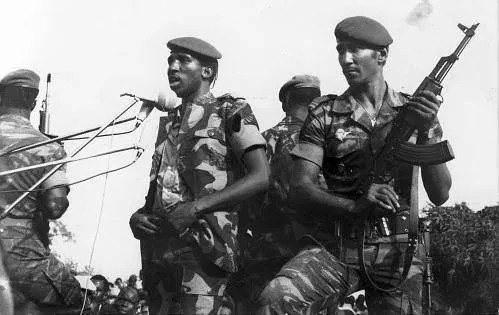
A month after his appointment as PM, Sankara visited Gaddafi in Libya. It will be the first time that the two meet personally. Great first impressions.
That same year, Gaddafi also visited his friend in Ouagadougou. It will be an impromptu visit. During this visit, the Libyan president will also meet Sankara’s inseparable right-hand man, Blaise Compaoré, whom Thomas calls “his brother.” Possibly convinced by his advisers, frightened by Sankara’s ambitious claims, on May 17, President Ouédraogo ordered the dismissal and arrest of the captain, accused of “leading the Upper Volta to an adventurous policy.”
The arrest took place after the visit to the country of the son of the then French president and African affairs adviser Jean-Christophe Mitterrand, so French influence is presumed behind this decision.
This results in intense protests across the country. When Gaddafi learns that his friend has been detained by Ouédraogo, he condemns this and demands the immediate release of Sankara.
The convictions were quickly joined by Ghanaian President Jerry Rawlings. The arrest of Sankara, who will be confined in his home, also coincides at the time that Libya’s relations with France were at their lowest point and on the brink of an imminent war with Chad, where a pro-French dictatorship with Hissène Habré ruled.
This will result in irrevocable damage to Tripoli-Ouagadougou relations, with Gaddafi accusing Ouédraogo of being a traitor and having aligned himself with France and its colonial interests in Africa, comparing Ouédraogo to Habré.
Compaoré will immediately contact Mukhabarat el-Jamahiriya to inform Gaddafi of his intention to launch a plan to free Thomas and overthrow the Ouédraogo regime. Gaddafi gives the green light to the plan and promises financing.
Between May and August 1983, the Mukhabarat will coordinate and finance various secret Sankarist cells in the Upper Volta Armed Forces. This is how on August 4 Compaoré takes the reins of a military uprising that overthrows Ouédraogo.
Thanks to Libyan support, the coup is a resounding success. The revolutionary military liberates Sankara and establishes the National Council of the Revolution, appointing him president of the same.
In the streets the triumph of the revolution is celebrated with joy.Sankara, as de facto president of Upper Volta, will undertake a real revolution in the country: Nationalization of the industry and all mineral wealth, agrarian reform, its policies to alleviate hunger and mass vaccination and literacy campaigns, etc.
Sankara will publicly acknowledge Gaddafi’s support, and Gaddafi for his part, enthusiastic about the Sankarista revolution, proudly announces that “The Second Jamahiriya” had just been born in Upper Volta. On the other hand, and as previously mentioned, Gaddafi was linked to an extensive network of Heteregeonean armed groups operating throughout Africa.
The fact is that in Benghazi there was a secret organization founded by the Mukhabarat: the World Revolutionary Headquarters. The Headquarters was a project of Gaddafi to create a “revolutionary incubator”, recruiting a wide range of revolutionaries from all over Africa, among them: Laurent Kabila from Congo, Kukoi Samba Samyang from Gambian and Foday Sankoh from Sierra Leone.
The so-called General Headquarters was in charge of organizing armed groups, providing them with military training, and providing them with weapons, intelligence, and funding as needed. Naturally these activities took place in the most silent secrecy.
Headquarters was, so to speak, “a Harvard of African guerrillas and rebels.” During these years, a mysterious figure rises to the ranks of the Headquarters: A former Liberian CIA agent named Charles Ghankay Taylor.
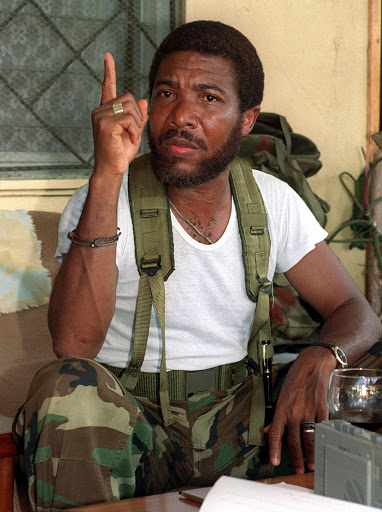
But who the hell was Taylor?Charles Taylor was a secret CIA officer operating in his native Liberia. Taylor will play a key role in the triumph of the coup in Liberia in 1980, whereby Samuel Doe seizes power and assassinates President William R. Tolbert Jr. Doe will also appoint him Director General of the General Services Agency.
Samuel Doe will become the quintessential American partner in the region, and also a staunch rival to Gaddafi. However, Charles Taylor falls from grace after being accused of embezzling CIA funds destined for various armed groups into his own bank account.

Taylor will be assigned to a maximum security prison in Massachusetts.Taylor will be on the run, not only fleeing a maximum security prison after a riot, but also managing to flee the US and return to Africa without being located.
As a former CIA agent, Taylor knows a few contacts who quickly connect him with the Mukhabarat el-Jamahiriya. Thus Taylor fled to Libya and settled in Benghazi, “disappearing” from the face of the earth for several years. In Benghazi, Taylor convinces Gaddafi to invest several million in founding and organizing an armed group in order to overthrow the Samuel Doe regime in his native Liberia. Gaddafi accepts the offer and makes the loan to Taylor.
Thus, the Mukhabarat will be in charge of the foundation, organization and training of an armed group: The National Patriotic Front of Liberia (NPFL).
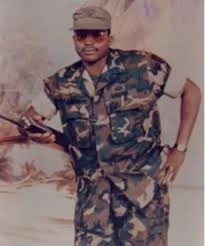
The NPFL establishes numerous military training and recruitment camps scattered throughout Libya. Gaddafi will be in charge of providing fighters to the group, swelling its ranks with mercenaries from all over Africa. Taylor manages to get in touch, through the Mukhabarat, with an old acquaintance in Liberia: General Thomas Quiwonkpa.
Charles Taylor convinces Quiwonkpa to, taking advantage of Doe’s enormous unpopularity, to stage a military coup.He starts a conspiracy within the Armed Forces of Liberia, coordinated from abroad by Taylor and the NPFL, to remove Doe from power.
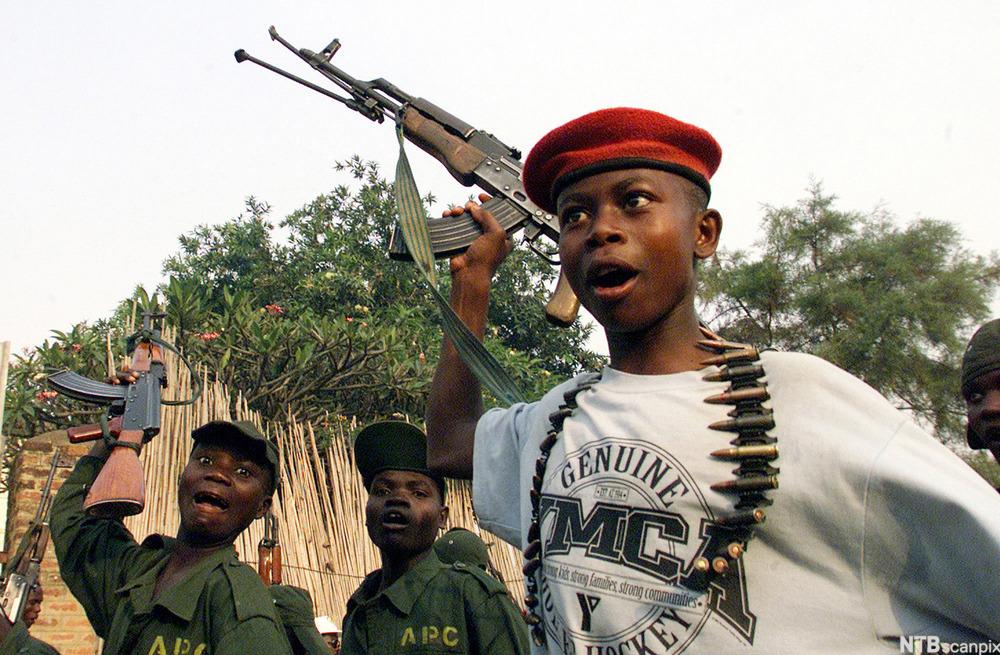
And finally on November 15, 1985, Quiwonkpa launched his coup. Around 600 officers take up arms against Samuel Doe. However, the coup goes bad: Government troops manage to quell the rebellion and Quiwonkpa is brutally massacred by Doe’s supporters, being dismembered alive and eaten.
Doe does not stay here and, in order to punish and terrorize the population, he takes brutal reprisals against civilians for the coup, targeting members of the Gio ethnic group as his main target. Henceforth, the situation in Liberia plummets into total disaster.
Although the coup is a bloody failure, Taylor knows how to capitalize on it, stepping out of the shadows and making himself known in Liberia as “the leader of the resistance against the tyrant Doe.”
Taylor transforms the failed coup into a gigantic propaganda campaign, emerging as a great revolutionary, founding local NPFL cells in Liberia and recruiting Liberian sympathizers underground.
Taylor decides to change his plan: Establish NPFL cells spread over different countries in the region and initiate a real invasion of Liberia from its neighboring countries.
Through Gaddafi, Taylor will contact various heads of state and propose a series of deals and offers to them in exchange for being able to station troops in their countries, recruit locals to their ranks and establish training camps and operations.
Some like the Ivorian Félix Houphouë-Boigny or the Togolese Gnassingbé Eyadéma will soon accept Taylor’s proposals. Possibly advised by Foday Sankoh, a corrupt former Sierra Leonean officer he met at Headquarters, Taylor decides to go into dirty business through mineral exploration and diamond trafficking.
The NPFL begins recruiting poor people from these countries with promises of money and food, or abducts children and youth: Some are assigned to military camps, to serve in the ranks of Taylor’s armyOthers are assigned to work in the mines, usually in slavery and abusive conditions – not hesitating to even amputate the hands of those who refuse to cooperate.
The business that Taylor runs from Libya is growing in a meteoric way and, with the collaboration and cover-up of both local governments and private Western companies that benefited from these “blood diamonds”, Taylor will become one of the people most powerful in the region, moving millions of dollars and controlling a large part of the diamond trafficking that took place in West Africa.
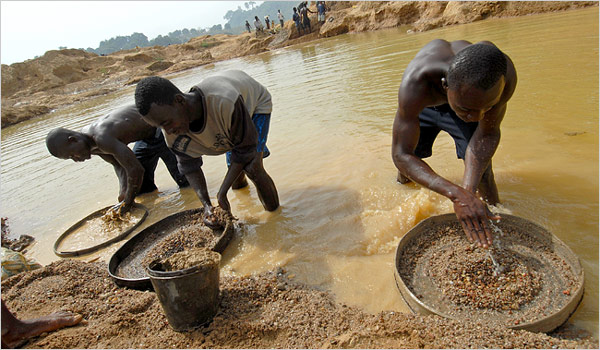
Taylor and his partners, in a few years, found a veritable illicit empire. Well, what does all this have to do with Thomas Sankara? Now we will go to it, but first let’s go back to Burkina Faso.
During the first year of the Sankara government, relations between Libya and Upper Volta were excellent … But something started to go wrong. What happened? Perhaps the earliest onset of deterioration in Tripoli-Ouagadougou relations took place when in October 1984, Thomas Sankara announced his adherence to Marxism-Leninism, which included the renown of his country Upper Volta to Burkina Faso – ‘the country of the men of integrity »- The drift from the “second Jamahiriya” to Marxism left Gaddafi, who was, by all accounts, an ironclad anti-communist, quite out of place.
Despite this, the two countries continued to maintain friendly relations. Proof of this is the official visit that Gaddafi made to Ouagadougou in December 1985.
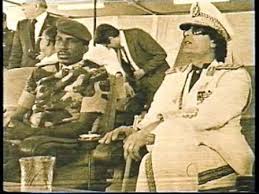
However, starting in 1986, relations between Libya and Burkina Faso began to rapidly degenerate. And one of the main reasons will be the war in Chad. In 1986, the situation between Chad and Libya began to heat up violently. Sankara offers to mediate between both parties.
This is not to the liking of Gaddafi, who sees Sankara as “a meddler” in a matter that does not concern him. Sankara offers to hold talks between the different Chadian factions in conflict in Ouagadougou to reach a peaceful solution.

Gaddafi doesn’t exactly appreciate this “interference” from “his friend” in what he regards as his business. We must not forget that Libya was militarily supporting certain Chadian armed factions.
Their objective was to overthrow the Habré regime and install one of its protégés in power in N’Djamena. However, Sankara – who adopted a Chadian girl – saw the resolution of the crisis from a different perspective.
He favored dialogue to allow Chadian leaders to reach a political consensus that lifts the country out of years and years of civil war. Gaddafi was indeed enraged and ordered Sankara to “meddle in his affairs,” to which Sankara responded by confronting the Libyan leader, accusing him of personally profiting from blood spilled in Chad.
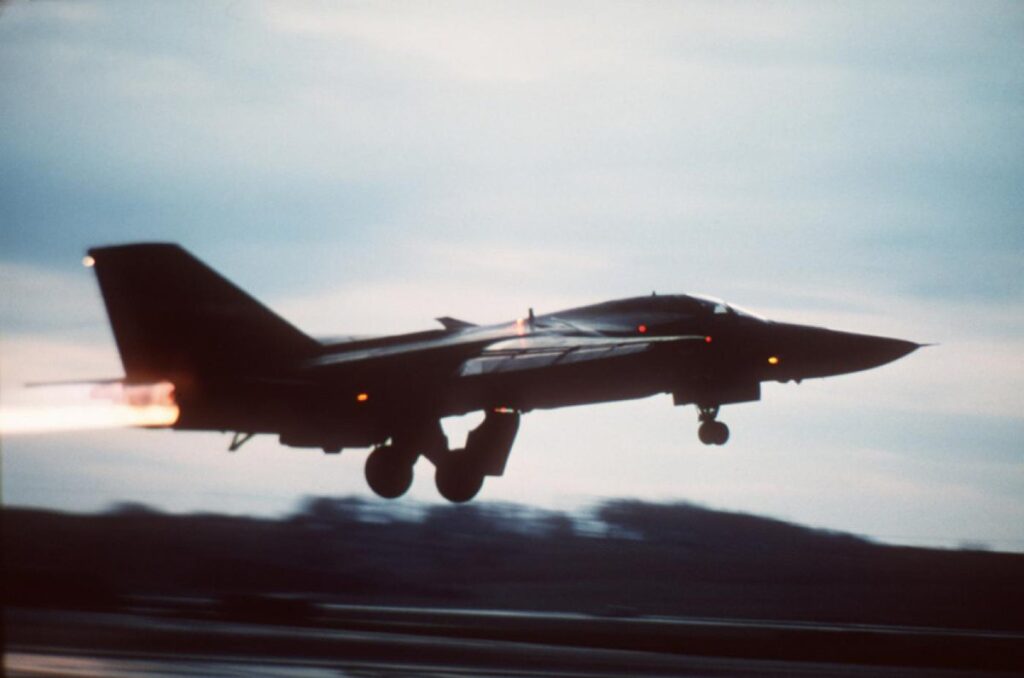
Another point of divergence between him and the Libyan leader is the question of Western Sahara: While Sankara conditionally supports the struggle of the Frente POLISARIO, Gaddafi has fluctuating positions on the issue.
Sometimes he is pro-POLISARIO, and then he is with Morocco.This fact causes Sankara to publicly denounce Libya’s policy, accusing them of opportunistic, self-serving and insincere.
These words only infuriate Gaddafi even more. Another point of contention between the two is Gaddafi’s policy towards France. Libya, after its relations with Paris reached its lowest point between 1983-1985, begins to moderate its hostility towards French meddling in Africa.
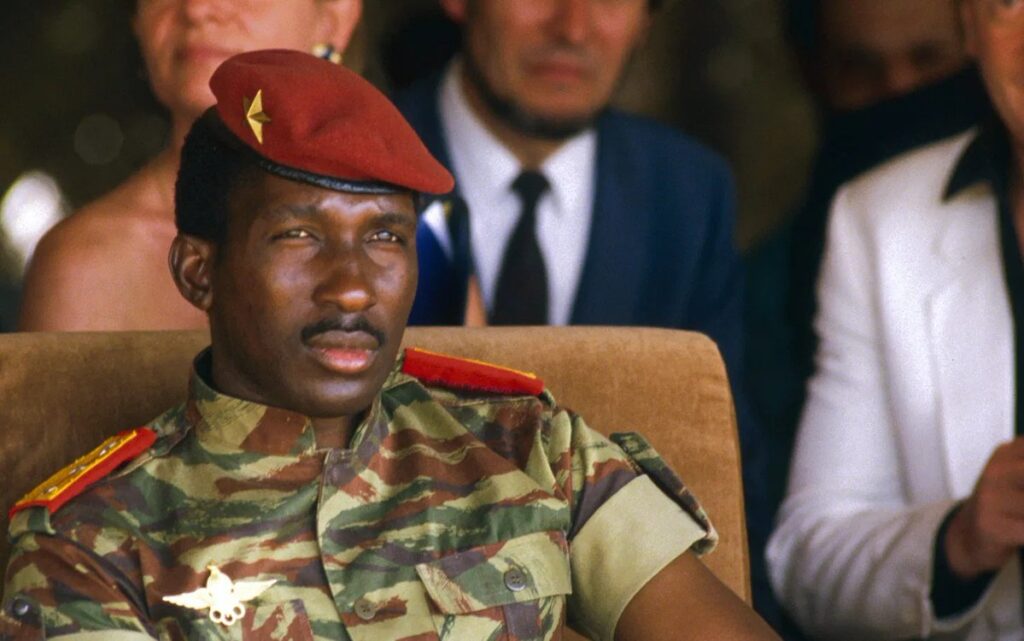
Why? Simple: Establishing Taylor’s diamond trafficking network required the participation of regimes such as the Ivory Coast, Togo or Mali, all of them pro-French dictatorships. It is obvious that these activities would not be overlooked in French eyes.
France would not retaliate or meddle in exchange for part of “the pie,” that is, the profits from this turbulent business. France, in fact, rewarded Gaddafi’s change of attitude from an aggressively hostile policy to a more flexible and conciliatory one: For example, when the US bombed Libya in April 1986, the French government refused to allow US planes to use its space aerialThe French blockade of the American attack forced American warplanes to take a longer route. When they arrived in Libya, in retaliation, they bombed so close to the French embassy that the building was damaged and communication links disabled.
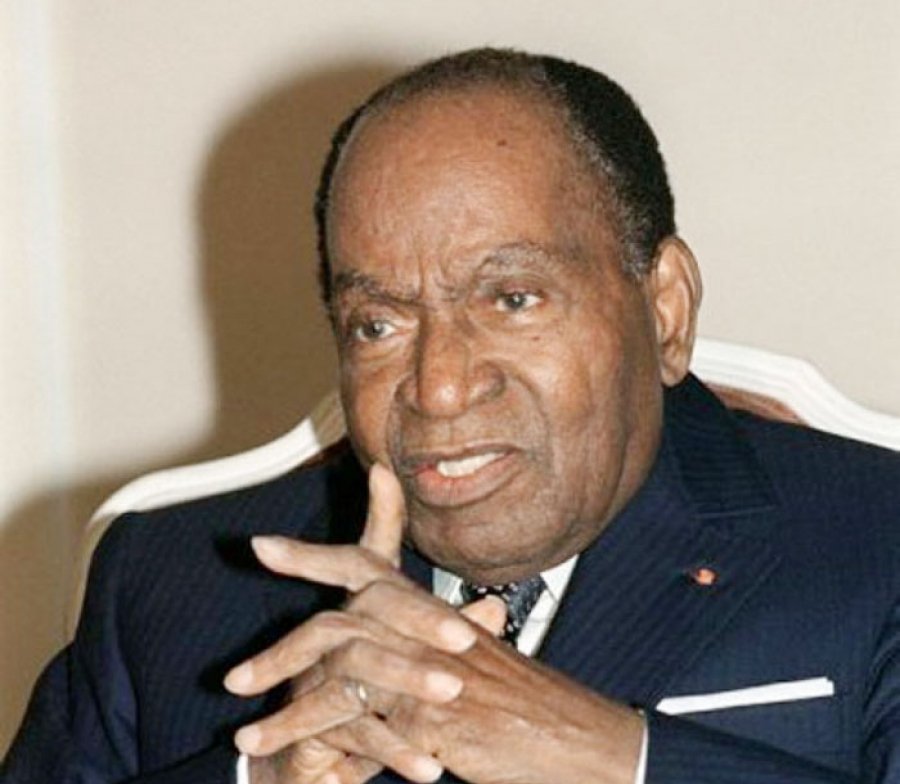
Evidence of these secret relations between France and Libya in the second half of the 1980s is also found in the latest book published by Roland Dumas, Mitterrand’s former foreign minister, where he reveals how Mitterrand secretly sent him to see Gaddafi A private jet was available for this type of mission.
Some of his visits took place amid a diplomatic dispute between France and Libya over Chad – the Libyan-occupied Aouzou gang served as a pretext for France to intervene in this torn country.
Although, as I say, these relationships occur in a discreet and hidden way, Sankara comes to notice this, and increasingly distrustful and hostile towards Libya, threatens to initiate an investigation against all those who go out “at night” or by “secondary roads. »To see Gaddafi.
Although relations between Libya and Burkina Faso had been considerably strained since 1986, they continued to exist. Although further apart, Tripoli and Ouagadougou maintain their diplomatic and commercial relations.
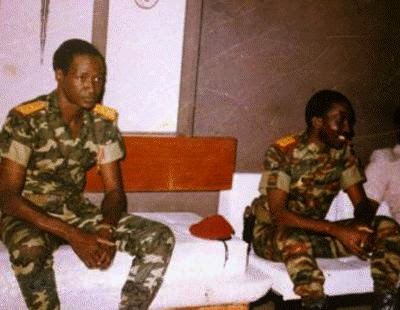
In fact, despite all these exchanges of insults and tense moments between the two leaders, Gaddafi will invite Sankara, along with other African leaders, to the anniversary of the 1969 Revolution, which was celebrated annually on September 1st, Sankara attends the 17th anniversary celebrations in Tripoli, which are accompanied by grand shows, flashy parades and military demonstrations.
It will be the last time the Thomas will set foot on Libya.During his stay in Libya, Gaddafi tells him about the NPFL and Charles Taylor, about their “diamond company” and his plans to overthrow Doe, and puts on the table various negotiations and proposals on how he and his country can benefit from this association.
Gaddafi demands to Sankara that the NPFL can establish military recruitment and training bases in Burkina, as well as exploit the country’s resources like a private company to finance its activities.
Sankara, far from showing interest, is greatly horrified. Upon learning of this, Taylor in person seeks to contact Sankara to persuade him and convince him of his benefits and interests, as he did with the rest of the leaders.
However, Sankara steadfastly refuses to receive Taylor. Sankara flatly refused to participate in this and showed total rejection of the clandestine and mafia activities of the NPFL.
Sankara makes it very clear to Gaddafi and Taylor that his country would not support a bloody war in Liberia or be an accessory to a diamond trafficking ring.
Taylor becomes irritated at failing to persuade Thomas Sankara. Sankara’s answer is clear and concise: “No.” No matter how Charles Taylor tries to convince the Burkinabe leader, there is no way to convince Sankara.
The discovery by Taylor and the NPFL will be a final blow to Tripoli-Ouagadougou relations. Sankara is furious, upset and confused, and does not want to know anything more about Gaddafi.
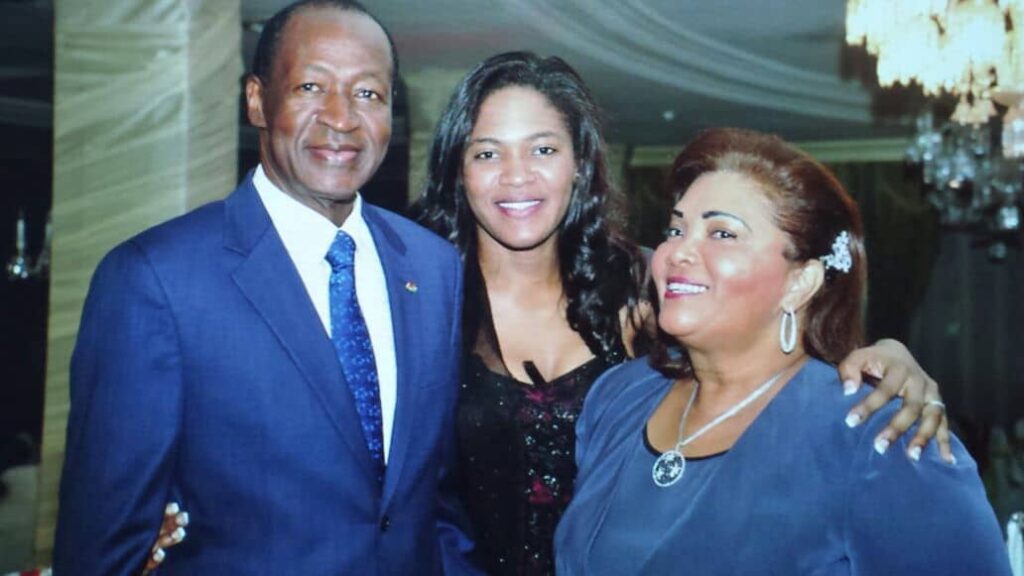
Taylor managed to easily convince the rest of the African leaders with his charisma, lip service and great offers and negotiations. For example, it was not difficult to convince Félix Houphouët-Boigny, an Ivorian dictator since 1960 whom Gaddafi referred to as “The Old Man.”Houphouët-Boigny, despite being a protégé of France, accepted Taylor’s proposals fairly immediately.
He gladly agreed to lend his country to the activities of the NPFL, making Côte d’Ivoire the main headquarters for the clandestine organization’s activities. Not only corruption and greed move old Felix, he also thirsts for revenge.
The old man bears a deep grudge against Doe who in 1980 brutally overthrew and assassinated President Tolbert, whom Houphouët-Boigny considered his personal friend.
However, young Thomas is not old Felix. Taylor, furious and offended, soon becomes obsessed with Burkina Faso Burkina must be his, whatever it may be! If Sankara does not give in to give up his country, then maybe someone else will … It is then that Taylor decides to contact the number two of the Burkinabe revolutionary regime: Blaise Compaoré, who, seduced by promises of power and business, agrees to meet privately and totally secretly with Taylor in the Ivory Coast.
There are not too many details or information about the secret meetings between Compaoré and Taylor in Yamoussoukro, mainly because of their absolute secrecy. Félix Houphouët-Boigny is in charge of covering up both of them and making sure not a word comes out.
This is how, between secret trips to Libya and the Ivory Coast, plots in the embassies and private meetings alleging diplomatic reasons, a conspiracy to overthrow Sankara from power begins to materialize.
Conspiracy that does not take long to attract French attention … Perhaps if Sankara was not able to realize what Compaoré was up to, if not until the end it was because of the blind faith he had in his comrade.
The relationship that existed between the two men was not mere camaraderie, it was practically a brotherhood. Sankara deeply appreciated Compaoré and considered him more than a companion, more than a friend: his brother, the person he could always count on, no matter the situation.
Sankara was aware that coups occurred, that the military could conspire and what could be betrayed by his men, but it never occurred to his mind that Compaoré might be able to do such a thing.
This “naivety”, this overconfidence, will eventually cost him his life. Sankara dies for not being able to distrust “his brother.” The other soldiers could conspire and betray him, but never Compaoré. That was for sure for Sankara.
Sankara suspected the existence of plots and conspiracies, but never that Compaoré was involved in it. There are different versions of how the two met: It is known that they began to collaborate when Sankara arrived in Morocco in 1976.
However, according to the documentary “Thomas Sankara, the murdered revolution”, it is stated that Compaoré had been raised as another son by the fatherof Thomas, like a brother more, reason why both men could have been together all their lives and had this deep friendship from the earliest age.
Either way, one thing was for sure: Thomas and Blaise looked like flesh and blood. Upon becoming president, Sankara will entrust Compaoré with high-level activities, such as relations with the Ivory Coast.
It is for this same reason that Compaoré is an old acquaintance of Félix Houphouët-Boigny, having even married in 1985 with a relative of this: Chantal Terrasson de Fougères, an Ivorian aristocrat strongly associated with the country’s politics. Compaoré, during his diplomatic activities, falls in love with her and they enter into marriage.
Chantal will be a key intermediary between Blaise and the Ivorian dictator.Considering the close relationship between Felix and Taylor, it is very possible that it was his wife Chantal, a greedy and corrupt woman, and not directly the Liberian mobster who convinced Compaoré to cooperate with the NPFL and rebel against “his brother.” Ivorian * The conspiracy is increasingly cooked: Félix Houphouët-Boigny, as a good French puppet, will communicate with Paris and will inform François Mitterrand of the conspiracy, the secret meetings and the businesses and networks that were taking place.
Taylor pressures Felix to convince the French to secure backing and financial support for the coup in case something went wrong. The French DGSE is quickly interested in Taylor. Taylor also seeks French complicity in covering up his diamond business and trafficking in valuable materials in the eyes of the world and ensuring that no foreign power interferes when the NPFL carries out its plan to invade Liberia.
Paris, who seeks to get rid of a figure as uncomfortable as Thomas Sankara, and also seeks to get a slice of a business as lucrative as the illegal exploration of the diamond industry, accepts Taylor’s conditions: There is a pact.
Old Felix introduces Compaoré to the DGSE: “This is the man who will eliminate the annoying Sankara.” The French will ensure that Compaoré will defend its interests in Burkina Faso and will be loyal to Paris once it has taken power.
Compaoré accepts the French conditions. After all discussed and agreed (also with the Libyans), the French services, much more experienced and prepared than the intelligence services of any African country, now take the reins of the sinister conspiracy.
France, who gives the green light to Taylor’s plans, is now who coordinates the scheme. Although he does not know it yet, Sankara already has the noose around his neck: his death has already been programmed. They all had their interests to defend: The French networks wanted more wood, more diamonds and less revolutionaries in the region. Houphouët-Boigny wanted revenge.
Gaddafi wanted to extend his influence in sub-Saharan Africa by implanting like-minded movements and warlords. Taylor wanted to use Burkina Faso as his private preserve for extracting juicy minerals, setting up military bases and recruiting centers.
And Compaoré, increasingly blinded by his selfishness, wanted to occupy “the throne of the head honcho” in Ouagadougou. By eliminating Sankara everyone won. Likewise, Mali, Togo and other regimes in the region were interested in eliminating the Burkinabe revolutionary, a figure increasingly uncomfortable due to the inspiration he generated in the popular masses of their countries.
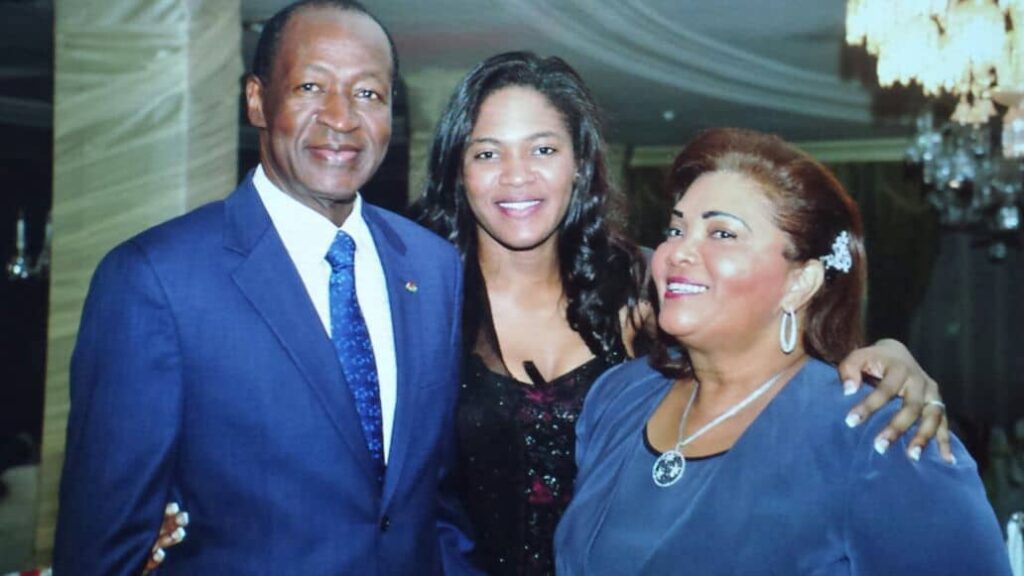
By 1987, the “country of men of integrity” was more and more alone and isolated: Its neighboring relations were increasingly tense and distanced, it was at enmity with all the powers: France, the United States, and China like UK hated Sankara Even the USSR and the Warsaw Pact, with Gobachev in power, viewed Sankara quite hostilely because of the independence that his revolution meant.
International financial agencies like the IMF or the World Bank, which he expelled from their country, wanted his head. Even more distant countries, such as Israel or Morocco, wanted to eliminate him from power. Men of integrity are alone against the world: Sankara is aware that when the counterrevolution no one will come out to defend or rescue him.
With an increasingly dark outlook for the Burkina Faso revolution, increasingly besieged by half the world, betrayed by his «friends» too, Sankara gives an almost prophetic speech where he affirms that:
«Even if (the imperialists) kill the revolutionary, they will not be able to kill their ideas.On September 1, 1987, the celebrations for the 18th anniversary of the Libyan revolution take place. Sankara, for the first time in his presidency, will not attend the celebrations, despite having been invited by Gaddafi as every year. Compaoré will be the one who travels to Tripoli this year, alone, as the representative of Burkina Faso.
Sankara, trusting Compaoré, sees no problem with him fulfilling this diplomatic role. However, something is wrong: Burkina Faso’s number two’s stay lasts longer than expected.
Numerous informants warn Sankara that something is wrong with Blaise Compaoré and report certain strange activities to him in recent months. Stubborn Sankara is annoyed by hints from these informants that Blaise might be a traitor.
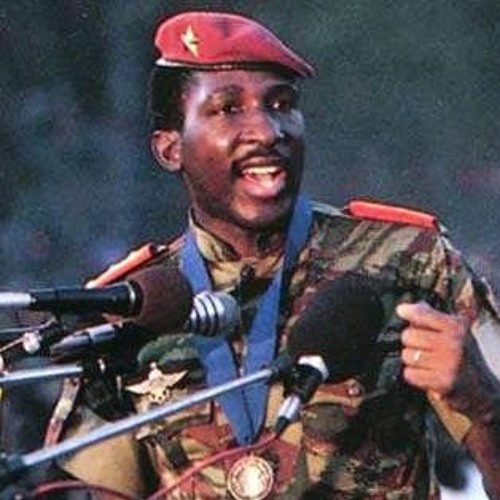
So he decides to ignore the alerts, convinced that Compaoré is the last person on the face of the earth capable of betraying him. For Sankara, all these anomalous activities would have a rational explanation or there is false information to incriminate Compaoré and thus destabilize and disunite the government.
Sankara stubbornly gets the idea that “No! Compaoré cannot be a traitor. This blind trust in his brother is about to cost him his life. Gaddafi and Compaoré, and possibly also Taylor, meet behind closed doors for several hours after the September 1st celebrations. The historian Bruno Jaffré believes that this visit was when Blaise and Gaddafi will definitively seal the fate of their “friend Sankara.”
After this, we all know what happened on October 15, two weeks after the meeting between Gaddafi and Compaoré.

Later I will give you an epilogue about what happened after the coup and its dire consequences.
